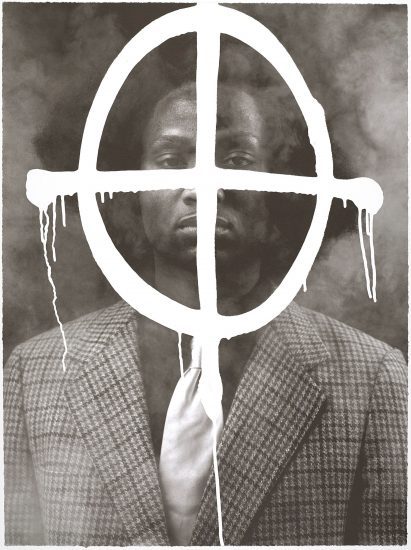
Rashid Johnson, “Thurgood in the Hour of Chaos,” 2009 (photograph: Rashid Johnson/Brooklyn Museum)
Brooklyn Museum, Robert E. Blum Gallery, first floor
200 Eastern Parkway at Washington St.
Through October 8, $10-$16
212-864-5400
www.brooklynmuseum.org
lynchinginamerica.eji.org
There are only a few more days to see the Brooklyn Museum’s shattering “The Legacy of Lynching: Confronting Racial Terror in America,” a searing, must-see collaboration with the Equal Justice Initiative and Google that looks at the past, present, and future of the lynching of blacks in the United States. The exhibition is built around a series of short EJI videos in which such men and women as Anthony Ray Hinton, Thomas Miles Sr., James Johnson, Mamie Lang Kirkland, Dee Dee Johnson, and Vanessa Croft share their personal stories about how members of their families were lynched, visiting graveyards and the trees from which the innocent victims were hanged as well as making comparisons between lynching and black and brown men who are or were on Death Row despite substantial evidence against their guilt. The oral histories are vividly photographed by Melissa Bunni Elian, Kris Graves, Raymond Thompson, Andre Wagner, Bee Walker, and Rog Walker and are utterly haunting, ending with explanatory notes from EJI founder and executive director Bryan Stevenson. (To further the discussion, EJI will be opening a national monument in Montgomery, Alabama, in 2018 called the Memorial to Peace and Justice.) The exhibition also features related works from the Brooklyn Museum’s collection, including Elizabeth Catlett’s “I Have Special Reservations,” Jacob Lawrence’s “Harlem Street Scene,” Kara Walker’s “Burning African Village Play Set with Big Hour and Lynching,” Rashid Johnson’s “Thurgood in the House of Chaos,” Theaster Gates’s “In Case of Race Riot II,” Jack Whitten’s “Black Monolith II (For Ralph Ellison),” and Titus Kaphar’s “The Jerome Project (My Loss),” which explore slavery, segregation, the civil rights movement, and modern-day racism. A kind of companion piece to such films as Ava DuVernay’s 13th and such books as Ta-Nehisi Coates’s Between the World and Me, the exhibit is a powerful, gut-wrenching experience that visitors walk through in near-silence — when I went, the only talking was between a white father and his young son, who whispered that he wanted to know what various words and images meant, and the dad told him, thoughtfully and directly. It was a microcosm of what should be happening more today, expanding the conversation about America’s Original Sin.